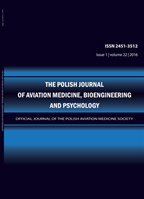2014, Volume 20, Issue 1
Closing the Loop between Man and Machine: Mitigating Hazardous States of Awareness with Adaptive Automation
Chad L. Stephens1, Alan Pope1
-------------------------------------------------------------------------------------------------
1NASA Langley Research Center
Full text
Streszczenie
The past century of passenger flight has seen continuous improvement in aviation safety by aerospace industry and the research community. However, while commercial aviation accident rates have continued to decline, human error-related incident and accident rates remain remarkably constant across all types of aviation. Unfortunately, this level of human error is unacceptable when considering projections for increased traffic volume, and is likely to yield more incidents and accidents unless a more complete understanding of operator error is achieved and remediations are implemented. One area of interest highlighted by researchers is Hazardous States of Awareness (HSAs) that can result from deficiencies in the design and inappropriate use of human-machine interfaces. Identifying and mitigating HSAs is critical for reducing operator errors. One promising approach uses psychophysiological measures which enable automated systems to adapt to the operator’s state and modify modes of operation to support optimal human performance. This paper will survey previous research and describe future directions for the application of psychophysiological measures of operators derived from cortical and autonomic assessment to perform real-time adaptive modulation of human-automation interactions.
Słowa kluczowe
Hazardous States of Awareness, human error
